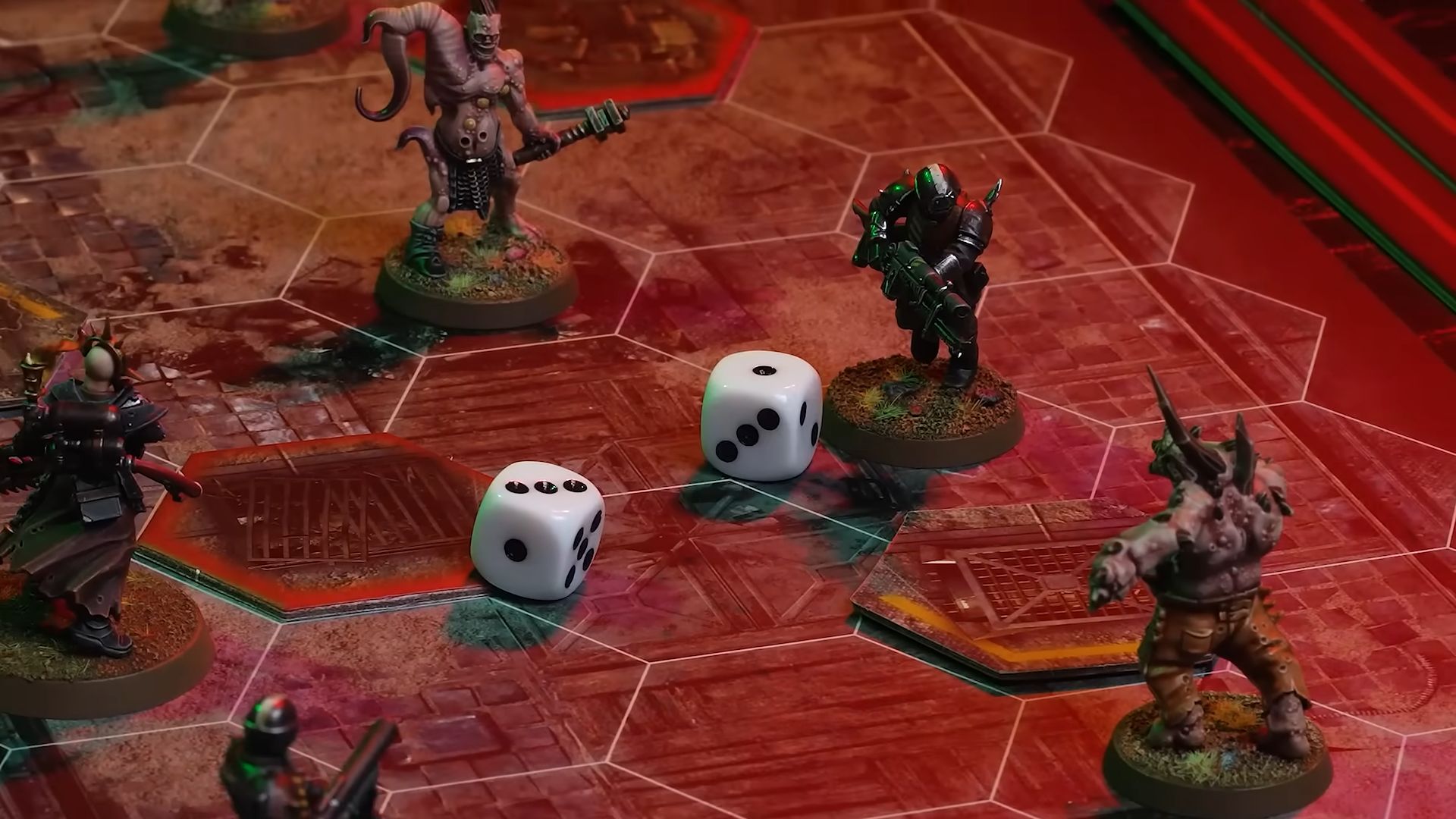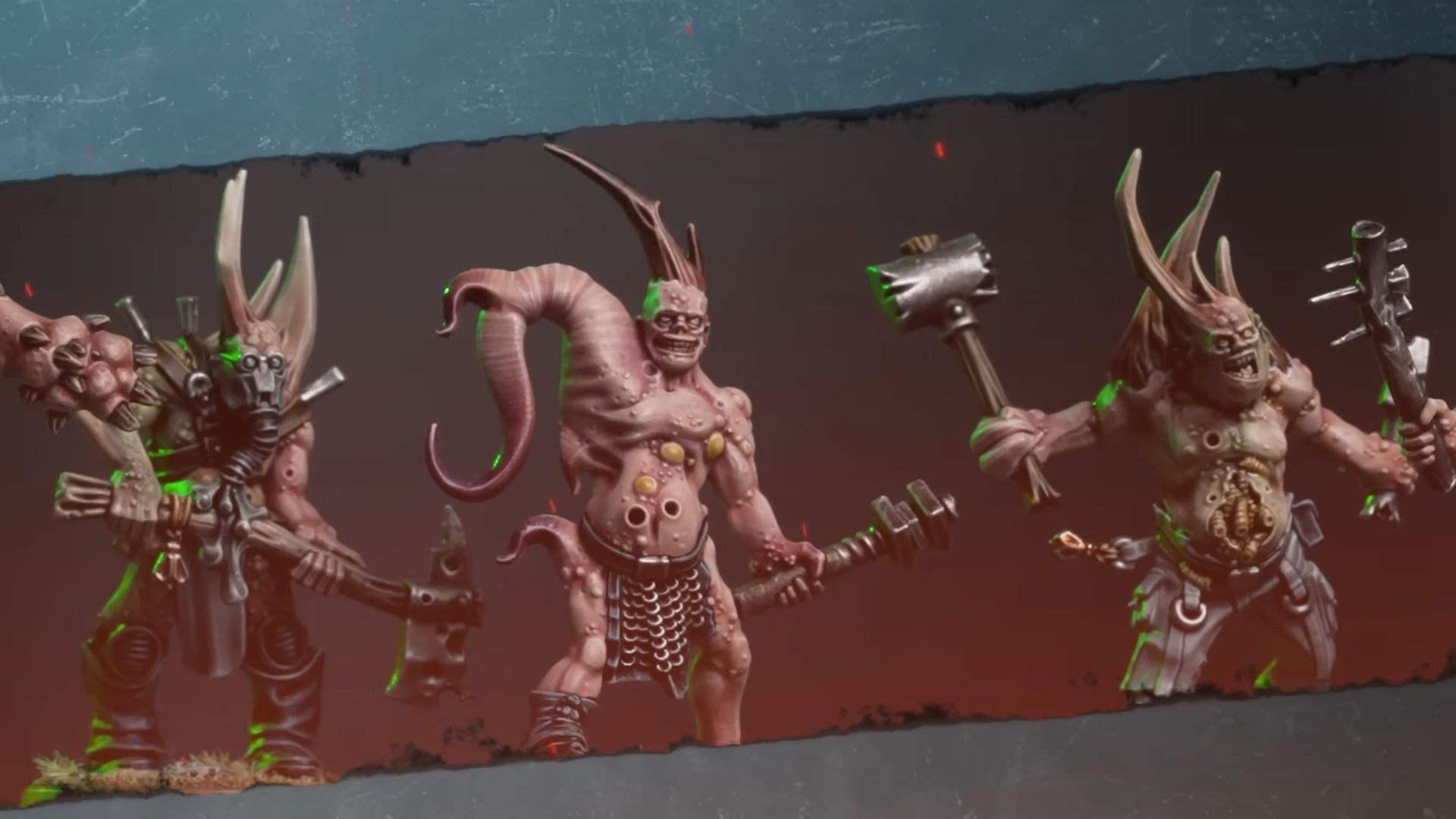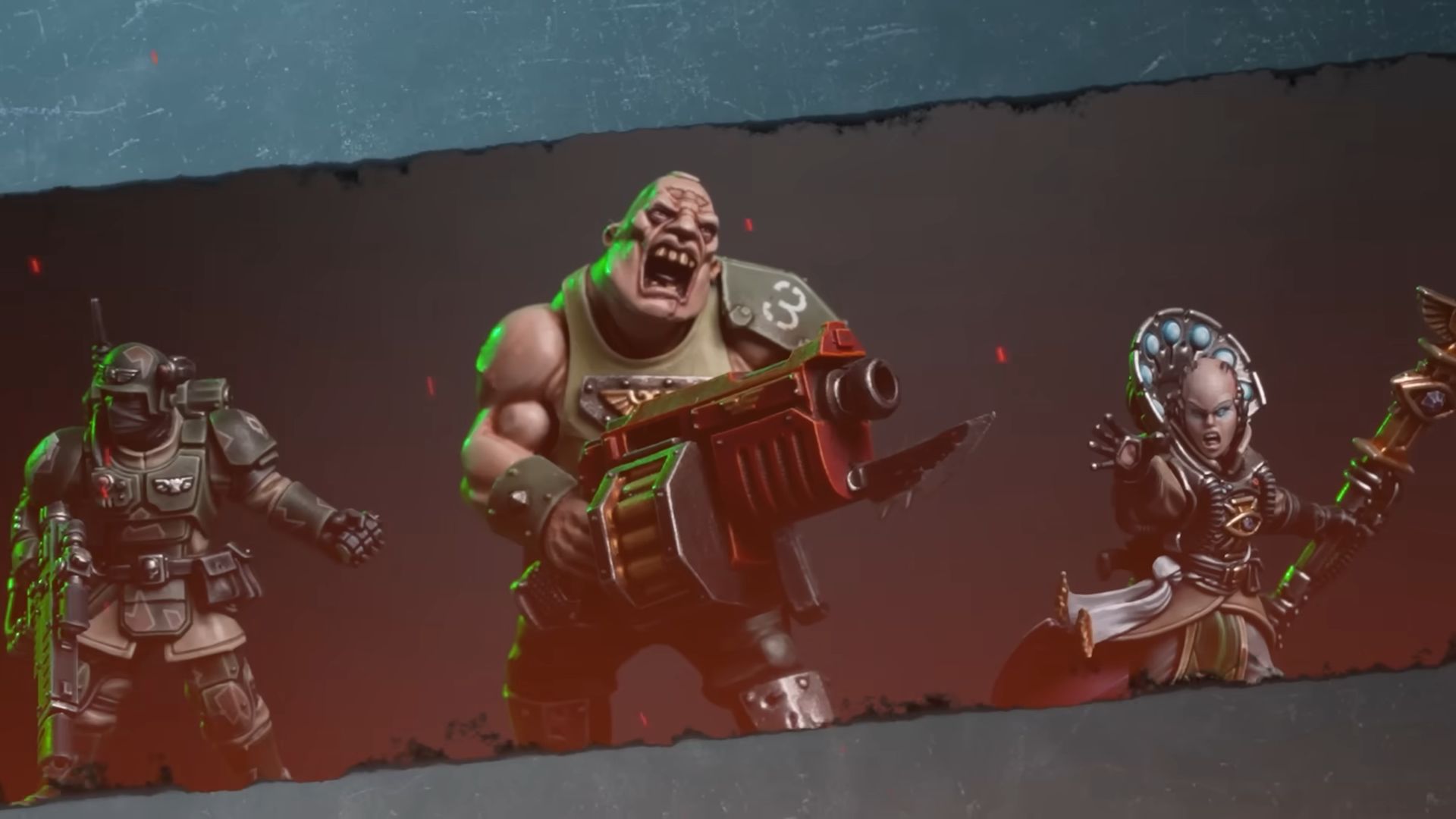Ordo dockets aren’t the same thing as ordo ingots. Ordo dockets, you see, are earned by doing missions, along with the two crafting resources plasteel and diamantine, all three of which you’ll need to upgrade your gear at the Shrine of the Omnissiah run by tech-priest Hadron Omega-7-7. New basic gear also costs ordo dockets, but must be bought from Peddler 138/143, the servitor at the Armory Exchange.
Ordo ingots, meanwhile, can only be earned by completing weekly challenges and spent on special gear at Sire Melk’s Requisitorium. Other challenges, called penances, are tracked by Sister Hestia Prine who rewards your penance points with cosmetics at the Shrine Penitentax. Though you can also get cosmetics from Mara Vinci at the Commissary for ordo dockets, or Commodore Alice Hallowette at the Commodore’s Vestures, who must be paid in aquilas—the currency that costs real money.
That’s before we even get into increasing your trust level to earn talent points, and your weapon masteries to earn blessing points for every single melee and ranged weapon type individually. Darktide’s a fun game when you’re running through the Hive blasting heretics with your Kantrael MGXII Infantry Lasgun, but Fatshark’s response to the complaints about it feeling incomplete at launch has been to endlessly twiddle with the progression in a way that I guess some players must enjoy, but leaves me cold.
Compare this to Darktide: The Miniatures Game, where you choose two cards from the shared equipment deck and two cards from your class’s specific upgrade deck, and then you’re good to go. If you’re playing the campaign, between missions you draw cards randomly from the deck—more cards the more kills you scored in the previous mission—and then choose one to go in your store. You can then swap cards in and out of your store to re-spec for the next mission, within the limit of two upgrades and two pieces of equipment.
That’s it. It’s a progression system simple enough you can take a photo of your cards at the end of a session and recreate it next week without needing to write anything down. After playing miniatures games with veterancy systems and RPG level-ups, it’s agreeably simple.

Which is Darktide: The Miniatures Game all over. It’s a co-op game that plays fast, with the heretics controlled by simple rules to give them a basic AI. Each enemy type has a list of if-then statements in descending order of preference: if a Moebian Trooper can’t shoot they’ll move and shoot, and if that won’t get them in range they’ll move and dash. They prioritize targets who are closest, ones who aren’t in cover, and ones who are injured.
In play it moves quick thanks to the absence of attacks of opportunity or rules against shooting when you’re in base-to-base contact, which make the movement feel FPS-slippery, and the fact heretics aren’t allowed to parry—a simple rule that simulates their suicidal charging in the videogame.
The rules are based on a trimmed-down version of Kill Team, which is itself a trimmed-down version of Warhammer 40,000. Games Workshop has been iterating on these rules since 1987, so it’s no surprise they’re streamlined as an oiled-up dolphin.
Each player takes one of four agents of the Inquisition, just like the videogame, whether psyker, ogryn, veteran, or zealot. The miniatures aren’t based on the characters from the trailers, but then my characters don’t look like those guys either—my zealot’s a goth with a skull face tattoo. While collectors aren’t happy that Darktide doesn’t come with any new miniatures—the agents, traitor guards, and poxwalkers all being recycled from existing Games Workshop sets—they’re all great and characterful little guys. If I ever get around to running the Wrath & Glory RPG, they’ll come in super handy.

One other thing that makes the minis game feel videogame-y is that each mission is broken up into three smaller rounds, making it easy to stop and come back to. It’s basically got its own checkpoints, and while we managed to fit an entire mission into a weeknight gaming session, I can see the value in having a way to stop every 20 or 30 minutes.
What prevents it from feeling exactly like the videogame is the low number of enemies. When reinforcements arrive it’s always just one guy instead of a horde, and while there are a few specialists like the sniper and flamer, there are no pox hounds or ragers or bursters or plague ogryns. There’s not even a trapper, but fuck those guys.
And of course there’s the fact it doesn’t have the videogame’s baroque systems of weapon upgrades, talent trees, relic blessings, and on and on. The simplicity of progression in the miniatures game feels right though, given that the characters are supposed to be disposable—their nickname is even the Rejects. It means you can swap players in and out if someone can’t make it without fuss.

The one thing that stops Darktide: The Miniatures Game from being an easy recommend is the price, though that’s true of almost every game of this type. I got it for $AU145 at my friendly local gaming store and figure it’s worthwhile. If I already owned Warhammer Quest: Blackstone Fortress, which shares a bunch of minis with it, I probably wouldn’t.
There are more heavy-duty boxes of premium plastic on the shelves for comparable prices too, but I rarely get to bring them to the table. The fact Darktide plays fast and is low-commitment means I actually got to play it with my group, while we’ve been meaning to try War of the Ring for ages and still haven’t got around to it. There’s even a solo mode, which is something Fatshark still hasn’t got around to adding to the videogame.
Source link










Add comment